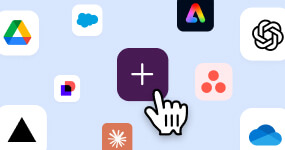
Template features:
Tags:
Share this template
About this template
Whether it’s insurance issues, paid time off policies, or details on a perk program, employees expect a quick answer when they come to your team for information about their benefits. But that gets tricky when that information is scattered across several different platforms. On top of that, questions are rolling in from email, Slack channels, direct messages, and even meetings, making them difficult to track and more likely to be missed.
To support employees quickly without straining your team, you need a benefits hub where you can centralize information and streamline help requests.
What is a benefits hub?
A benefits hub brings all your documents, institutional knowledge, and employee questions into a central location. This greatly reduces repetitive work for your team and empowers employees with self-service options. Everybody wins when benefits information is transparent and easy to access.
You can add features and sections to your benefits hub based on what your company needs, but every hub should have these foundational sections:
- Frequently asked questions. Build your FAQ section with the recurring questions your team keeps dealing with. In addition to clear answers, include resource links.
- Knowledge base. Link to all your benefits documents and tools, even (and especially) if they’re scattered between different platforms.
- Key contacts. Make it clear who employees should go to for specific issues. Consider also adding contact info for your benefit providers, as relevant.
The advantages of our employee benefits hub template
The Slack benefits hub template is a central resource designed to consolidate all your company’s employee benefits information into one easily accessible place.
Streamline benefits management
This template makes benefits management less painful for your HR team and your employees by ensuring that every employee has instant access to the information they need. This centralization not only enhances operational efficiency, it also improves employee satisfaction by providing clear, immediate answers on available benefits.
This isn’t just a static page, though. With automated custom workflows, robust search tools, and hundreds of available third-party integrations, your benefits hub becomes an interactive and dynamic knowledge-sharing platform.
A centralized benefits guide
This employee benefits hub template features a customizable benefits guide that pulls all your benefits resources into a single location. All you need to do is add links to your benefit documents, key contact information, FAQs, and other essential resources.
This benefits guide can serve as the go-to directory for all benefits information, helping employees to navigate their options as well as understand the full scope of the benefits and perks your company provides. It improves the employee experience and reduces the workload on your HR team. That’s a win-win.
Organization is key to making the most of your benefit guide, so be strategic in designing a structure that’s both intuitive and comprehensive for the needs of your company. In addition to the default categories included in the benefits guide template, you can also consider sections for:
- Co-located office benefits, such as commuter benefits or a lunch stipend.
- Remote office benefits, such as an equipment budget or utilities stipend.
- Career development benefits, such as qualifying programs and reimbursement policy.
Real-time Q&A for clarity
Our employee benefits hub template allows employees to submit their specific questions via a form instead of just relying on an FAQ section. These structured form submissions give your team the details they need right off the bat. This makes the entire process more efficient and painless for everyone involved.
Once a question is submitted, a workflow automation will create a ticket in the benefits hub channel. After an HR rep claims the ticket, the workflow creates a conversation thread between the HR rep and the person submitting the question. Real-time communication makes it much easier for both parties to resolve issues quickly.
Customize the question forms to capture all the relevant information so it’s as easy as possible to assign and answer questions. For example, in addition to the default fields of category and priority, you could also create fields for:
- Location. This will help you quickly match global team members to the right benefits manager.
- File upload. Give the option to attach relevant files, such as receipts or emails.
- Contact. Add a “Slack user” field that lets employees tag their manager or an HR rep who’s helped them in the past and has context on the issue.
Effortlessly track benefits questions
Turn your benefits hub template into both a task list and a knowledge source for your team with the question tracker. This tool automatically logs and organizes all questions submitted to the benefits hub channel. This tracker makes it easy for HR teams to manage incoming queries, automatically change a query’s status, and ensure no employee question goes unanswered.
This is especially important when dealing with complex but potentially time-sensitive issues, such as questions about medical benefits. You might not be able to answer a question immediately, but you can’t risk losing these questions in the pile, either. Use the question tracker to set yourself reminders, tag team members in task comments, or to filter questions quickly based on topic and urgency.
With this efficient tracking system, your HR team can also identify common concerns and gaps in your existing resources.
Periodically look through the items in your list to find recurring questions. Use filters so you can focus on trends in specific categories. Then, review the conversations your HR reps had with the employees. Keep an eye out for conversations where the employee struggled to understand the answer or raised concerns or frustrations. Then, take what you learned in this review and use it to update or add entries to your benefits guide.
Take advantage of the insights provided through the question tracker to organically build your FAQ and continuously improve your entire benefits information hub.









